2016 Renault Kwid 1.0 review, road test
With a 1.0-litre engine and an AMT option, is the Kwid experience now complete?
Updated on Feb 28, 2017 11:13:45 AM
18,266 Views
Follow us on


Door decals and grey mirrors, the only style difference in the 1.0-litre cars.

Touchscreen and digital instrumentation still the highlight of the segment.
The Renault Kwid’s success story in India is a case study of how a multinational wiggled its way into the budget end of the Indian market that’s dominated by local giant, Maruti. The winning formula involving competitive pricing, SUV-inspired styling, great ride quality, plenty of space and low running costs is what made the Kwid click. And yes, there’s that much-coveted touchscreen too. But the Kwid hasn’t been all perfect. Its biggest weakness has been the 799cc engine which, to put it plainly, has been a ‘work-in-progress’ from the day it was launched. While performance is at best decent and on par with the competition, noise levels and inconsistent power delivery were major issues. So, the larger (and more sorted) 1.0-litre engine hasn’t come a day too soon. And, the automatic option too promises to seriously transform the way the Kwid drives.
This is instantly obvious the moment you fire up the engine. It’s smoother and quieter than before and, although the uneasy idle typical of most three-cylinder units is present, vibrations are perceptibly lower than before. The larger 999cc engine seems to be better balanced but it’s the redesigned timing chain that Renault quietly slipped into the engines of the Kwid some months ago that has added a bit of refinement. In fact, there has been a stream of constant refinements and updates since the car was launched.
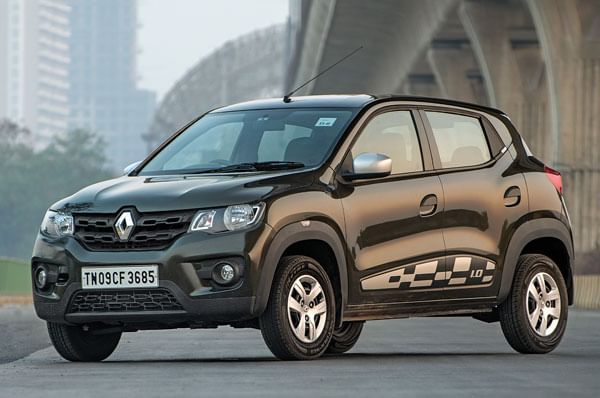
The 1.0-litre engine puts out 68hp at 5,500rpm, which is a significant 26 percent increase over the Kwid 0.8’s modest 54hp. Torque too has gone up by an identical 26 percent to 91Nm. Although, negating the increased power benefit to a small extent is the substantial 40kg increase in weight. However, this extra weight is not due to the larger engine (which uses the same lightweight block as before), but the reinforcements in the body structure for crash safety and a pre-tensioning front seatbelt system. From a dismal rating of zero stars in the Global NCAP tests, the Kwid’s crash protection has been upgraded to 1 star. This may still not be respectable, but it’s important to know that this rating has made the Kwid the safest car in its class. Incidentally, the Kwid 0.8 too gets the same beefed-up body structure and a similar weight gain.
| Renault Kwid Price, Mileage, Specifications, Features and Variants | |
|---|---|
| Brand | Renault |
| Model Name | Kwid |
| Renault Kwid Price | ₹ 4.10 - 5.51 lakh |
| Renault Kwid Range/Mileage | Petrol : 23.04 - 25.17kpl |
| Renault Kwid Specifications | Hatchback | 5 doors | 5 seats View All Specs |
| Renault Kwid Features | Halogen headlight | 7-inch Touchscreen display | 1 airbags View All Features |
| Renault Kwid Variants | Standard | RxE 0.8 | RxL 0.8 View All Variants |
Thus, the performance difference is dramatic. At 13.85sec, the 1.0L Kwid is over 3sec faster in its sprint from 0-100kph. Rolling from 20 -80kph in third gear is also quicker at 12.34sec, against the 800cc’s 17.13sec. And these figures are of the lighter Kwid we first tested.
More important than the performance figures is the way the more powerful Kwid now drives. Gone are the flat spots and hesitant power delivery that plagued the 0.8-litre Kwid, and instead, what you get is an engine that feels much more responsive, smoother and effortless. Yes, there is still a bit of that on-off jerkiness seen in cars with an aggressive fuel cut-off when you back off the throttle (for better economy); but you experience this only in first gear at crawling speeds. Get the revs up and the drivability improves, and the good thing is that the extra torque results in fewer gearshifts – you can pull from low revs without needing to downshift. The 1.0-litre Kwid uses the same gearbox as the 800cc variant and requires little effort to operate.
Overtaking is easy in town and on the highway, and complementing the increased performance is the Kwid’s composure at speed. The long-travel suspension was one of the outstanding bits of the Kwid and it feels just as good on this latest variant. The MacPherson struts up front and the twist beam at the rear do an outstanding job of absorbing pretty much everything our roads throw at it. Apart from the incredible ride, the Kwid handles well too and gives a certain level of confidence you get in a bigger, heavier car. It’s only at highway speeds that – due to the light steering and a susceptibility to be buffeted by cross winds – a sense of unease steps in.
The automatic variant – available with only the 1.0-litre engine (plans to offer an auto on the 0.8 have been shelved for now) – gets the automated manual transmission (AMT), which is now a mainstream technology in budget automatic cars. However, the Kwid’s AMT is radically different to all the other AMT cars we’ve driven.
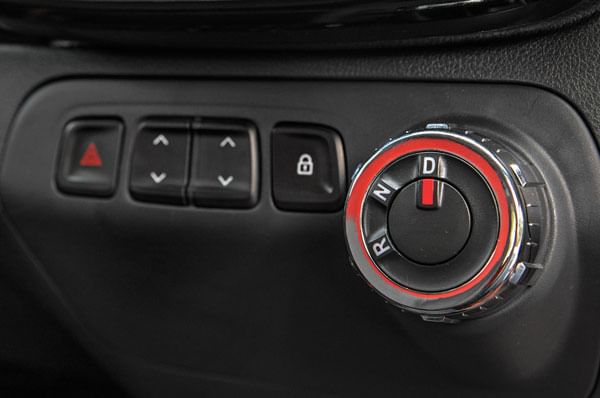
Firstly, the typical gear lever has been replaced by a dashboard-mounted rotary selector knob which frees up storage space in the centre console. However, this also means that there is no way of manually influencing a gear change; there is no lever to tip or paddles to flip. All you have are three modes on the selector knob – Forward, Reverse and Neutral. There isn’t a gear indicator either to tell you which gear you’re driving in. Renault is banking on a hunch that most owners will want convenience above all and wouldn’t want to bother with manually shifting gears. The other major difference between the Kwid AMT (Easy-R in Renault brand speak) and other AMTs is that the Renault unit uses just one Electronic Control Module (ECM) for both the engine and the transmission. All other AMTs use two ECMs, one for the engine and the other for the transmission to ‘talk’ to each other, primarily because the suppliers for the engine and AMT units are different. But in Kwid’s case, Renault has developed the AMT unit in-house. This has not only saved costs but has allowed for a more seamless integration between the engine and transmission. The third difference is that the gear ratios, between the manual and the AMT, are not identical or shared. Renault has taken the effort to give the Kwid AMT shorter second, third and fourth gear ratios to improve drivability. So how does all this work in the real world?
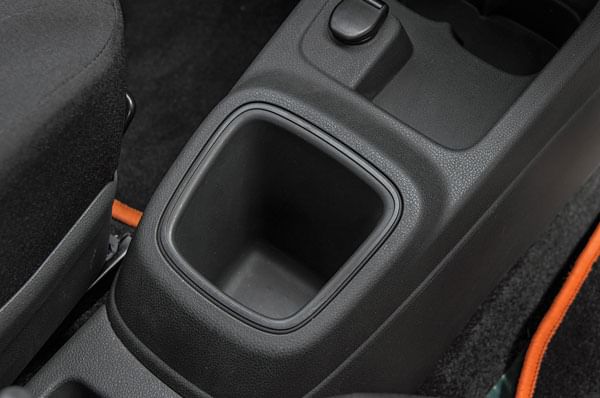
There’s a bit of a start-up procedure. You have to select ‘N’ and have your foot on the brake and wait for three seconds before the engine fires up. Rotate the knob to ‘D’, floor the throttle and there’s an initial jerk when the clutch sharply engages, but after that upshifts are impressively smooth and quick. Drive with a light foot and the gearbox is calibrated to upshift as quickly as possibly and when you floor it, there’s a fair bit of hesitation before the downshift. There is a bit of a pause between shifts but it’s nowhere as much as the other AMTs we have driven.
The ‘head-nod’, typical of an AMT, is pretty mild and, once on the move, the Kwid AMT’s shifts are less abrupt. The closely stacked ratios also help in keeping the pause between shifts to a minimum, but, unlike other AMTs, you can hear the gear shifts and that doesn’t speak well of the overall sound insulation and refinement which is still an issue.
Another trouble with the AMT is the lack of a creep function, which will be missed when crawling in bumper-to-bumper traffic, inching into a tight parking spot or starting off on an incline with no rollback.
It’s an omission we feel Renault will have to fix in the future.
What’s commendable is the 1.0-litre engine’s frugal nature. In our tests, the 1.0L manual returned 15.1kpl for the city and 22.5 on the highway compared to the 800cc’s 15.3kpl and 21.5kpl. The 1.0L AMT gave us 14.9kpl in the city and an identical 22.5kpl on the highway. Impressive as these figures may be, they can’t compensate for the Kwid’s range, limited by the small 28-litre fuel tank.
Both the 1.0 manual and automatic are available only in the top RXT trim and, save for the grey mirrors and a ‘1.0’ decal on the doors, they look identical to the 800cc RXT variant. Up front, there’s a large Renault badge on the grille which is flanked by ‘C’-themed headlamps, and the bumper below carries inset fog lamps. The squared-out wheel arches are prominent on the sides and feature the turn indicators which are integrated into the front cladding. As mentioned earlier, the sides of the 1.0-litre engine cars gets a decal-covered door trim, but this may seem too large to some. The rear window, however, gets a nice, discreet chrome ‘RXT’ badge at the lower edge. At the rear, black dominates the bumper and there’s an integrated rear spoiler at the top. Overall, there isn’t a whole lot that’s different, with all getting the high ground clearance of 180mm.
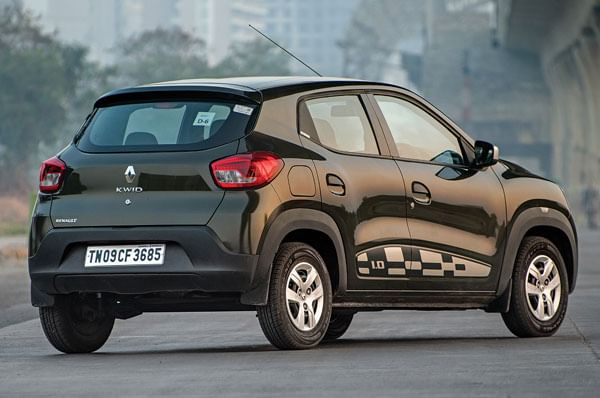
The cabins too are identical with respect to styling and equipment, so expect to find similar bits in the interior like the digital speedo unit and, of course, the sought-after 7.0-inch touchscreen. The unit also has a navigation system, but given the budget cost, it does not get a rear-view camera, unlike Renault’s larger cars where it does duty. The steering wheel stands out, thanks to its quality and chunky feel.
In terms of space, the Kwid can seat four average-sized adults very comfortably. The front seats, however, don’t offer enough side bolstering and are fairly flat. The boot is still impressive with its substantial 300 litres of storage. Storage spaces around the cabin are ample, with two gloveboxes and a large open storage between them. In terms of safety features, the Kwid 1.0 gets only a driver airbag and no ABS.
Copyright (c) Autocar India. All rights reserved.

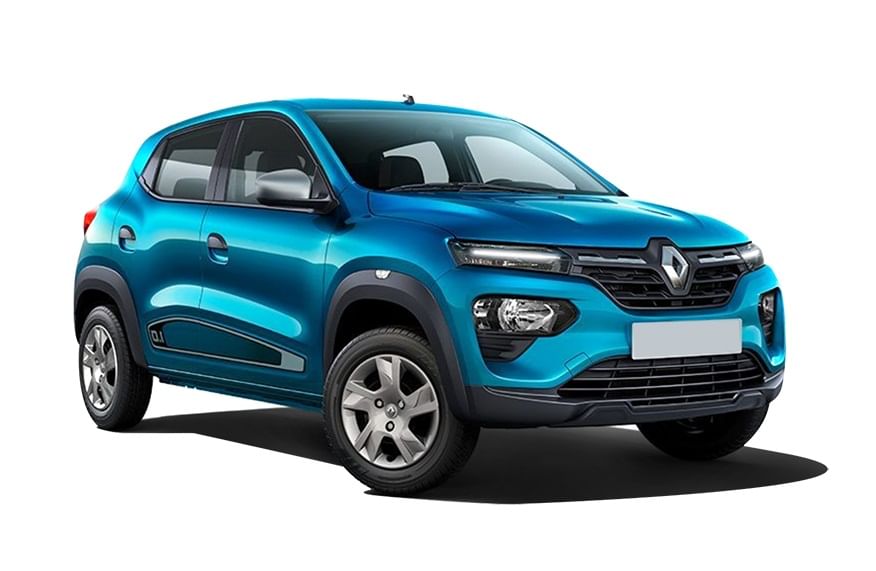


Comments
Member Login
Personal Details
No comments yet. Be the first to comment.